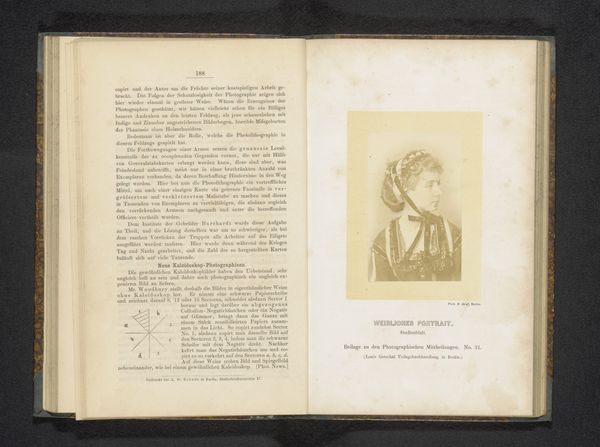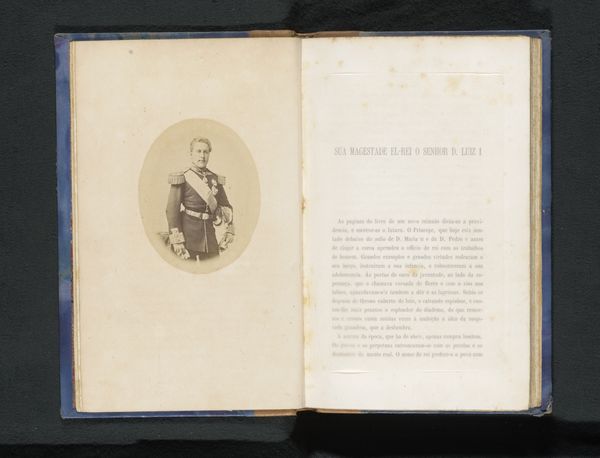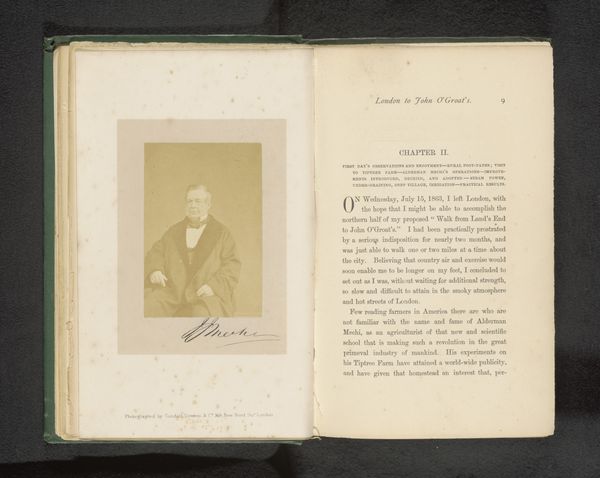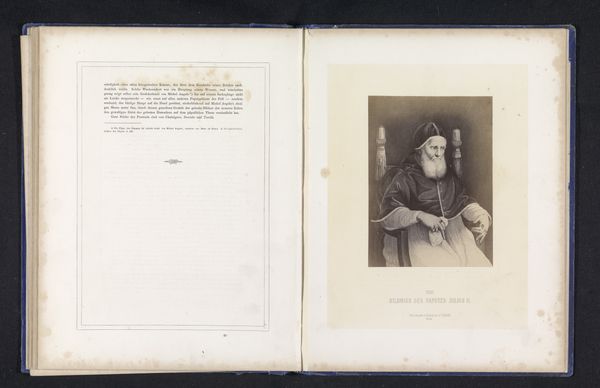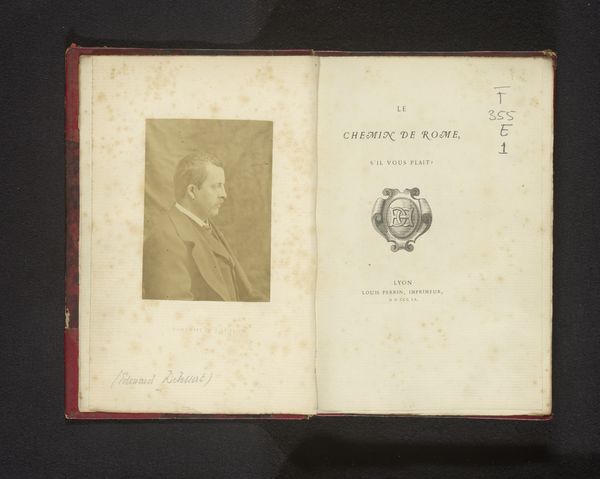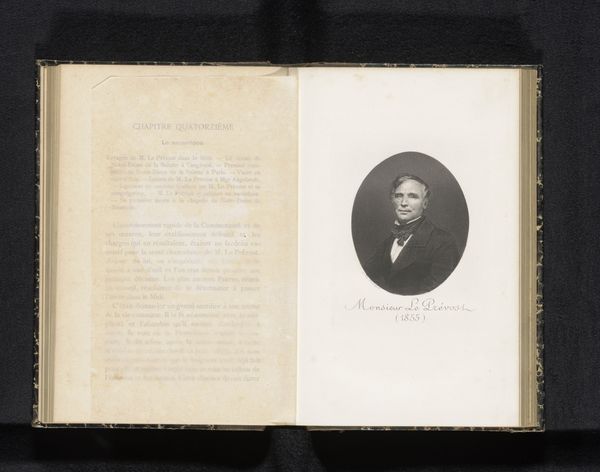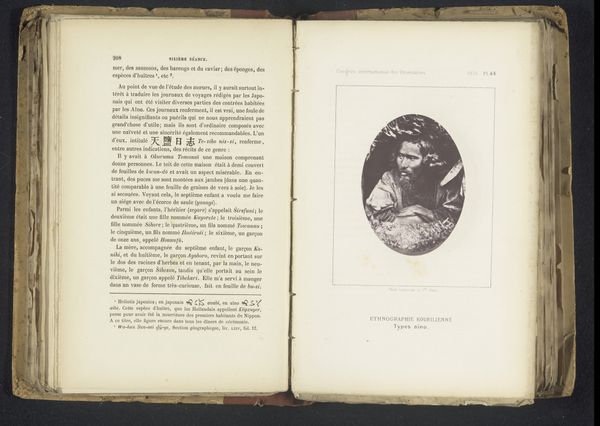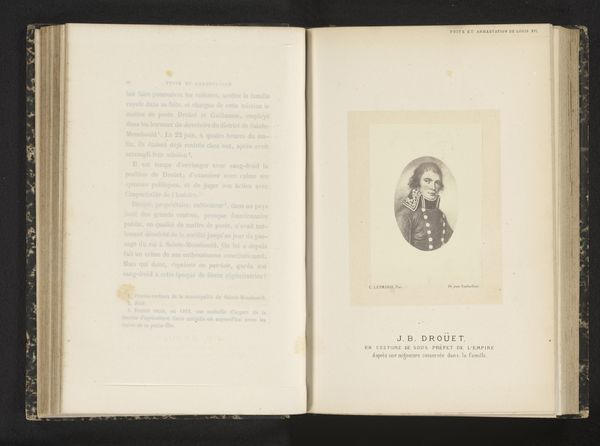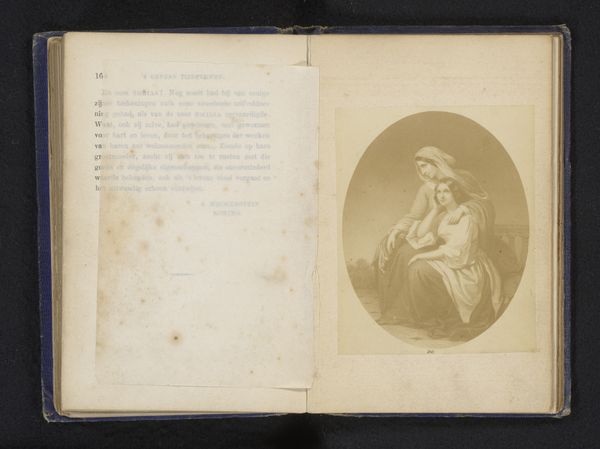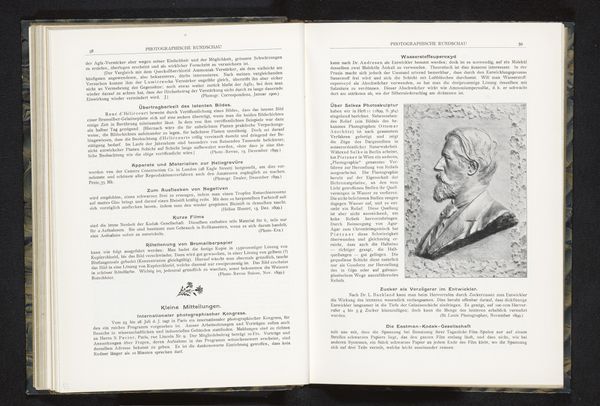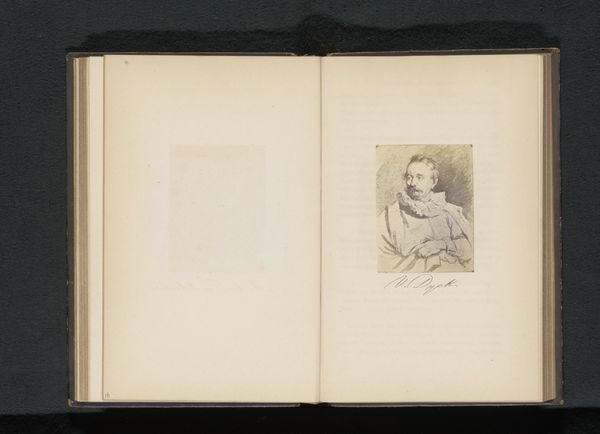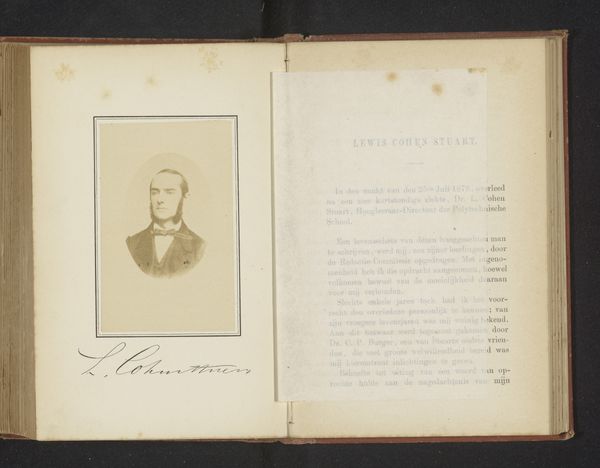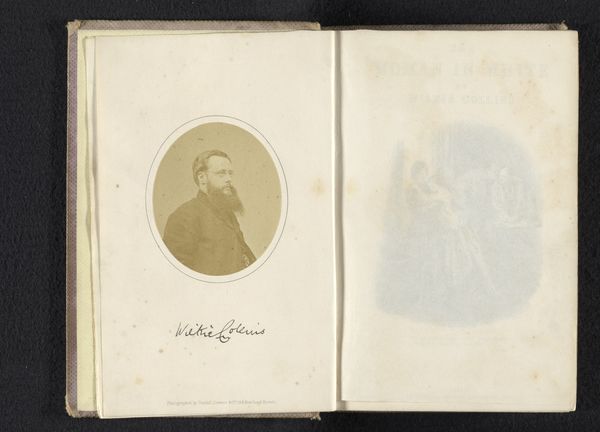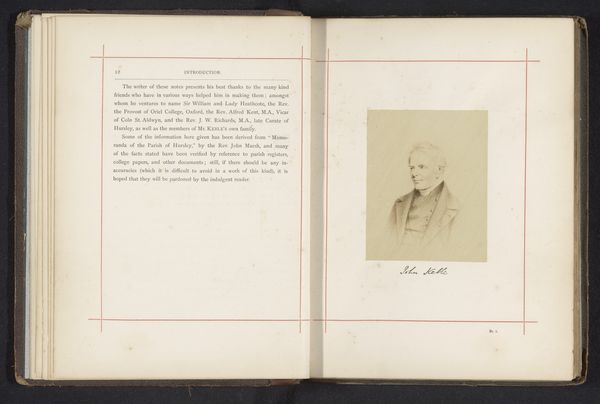
drawing, print, intaglio, paper
#
drawing
#
aged paper
#
homemade paper
#
16_19th-century
#
paper non-digital material
#
paperlike
# print
#
intaglio
#
sketch book
#
paper
#
personal sketchbook
#
journal
#
paper medium
#
realism
#
historical font
#
columned text
Dimensions: height 100 mm, width 95 mm
Copyright: Rijks Museum: Open Domain
Curator: Here we have a photogravure print, specifically a reproduction, from before 1890. It captures a portrait of Jean-Léon Le Prévost within what appears to be an open book. The intaglio print, displayed on aged paper, evokes a sense of history and reflection. Editor: The immediate impression I get is one of quiet dignity, almost melancholic. The delicate linework and soft gradations give him an air of pensiveness, don’t you think? It's intimate in scale but somehow monumental in its mood. Curator: It's fascinating how a relatively simple print can evoke such depth. The realism, typical of portraiture of that era, anchors it in a specific social context—a time when printed portraits provided widespread access to images of prominent figures. Consider what it meant to have your image reproduced and disseminated! Editor: Absolutely. The book format situates the image in a textual world, almost suggesting a story, inviting questions. Who was Jean-Léon Le Prévost? What role did he play? It suggests, in my eyes, class, erudition, perhaps even privilege, all signaled by the gesture of inclusion in print. What commentary does this imply? Curator: We can infer Le Prévost's status based on the historical font, a design of columned text which hints at societal prominence, almost like an invitation into his personal life and character. I feel a deep resonance here, something human beyond historical record. It makes one question what aspects of our identities we choose to foreground in the visual record. Editor: Exactly! The placement within what seems like a personal sketchbook opens a window into intimate spaces, questioning who constructs memory and to what purpose? The use of paper, a medium both fragile and enduring, emphasizes the human story and how societies can either preserve or rewrite collective understanding. Curator: Seeing this photogravure really highlights how an artwork from the past, presented via reproductions can reveal narratives about identity, documentation, and societal values, just as vibrant now. The book format enhances intimacy to an individual's sense of the collective memory. Editor: I think the lasting value for me lies in its quiet challenge. A humble sketch compels us to see the connections between our narratives and the bigger scope, asking questions we have not even considered. It bridges the past and present!
Comments
No comments
Be the first to comment and join the conversation on the ultimate creative platform.
